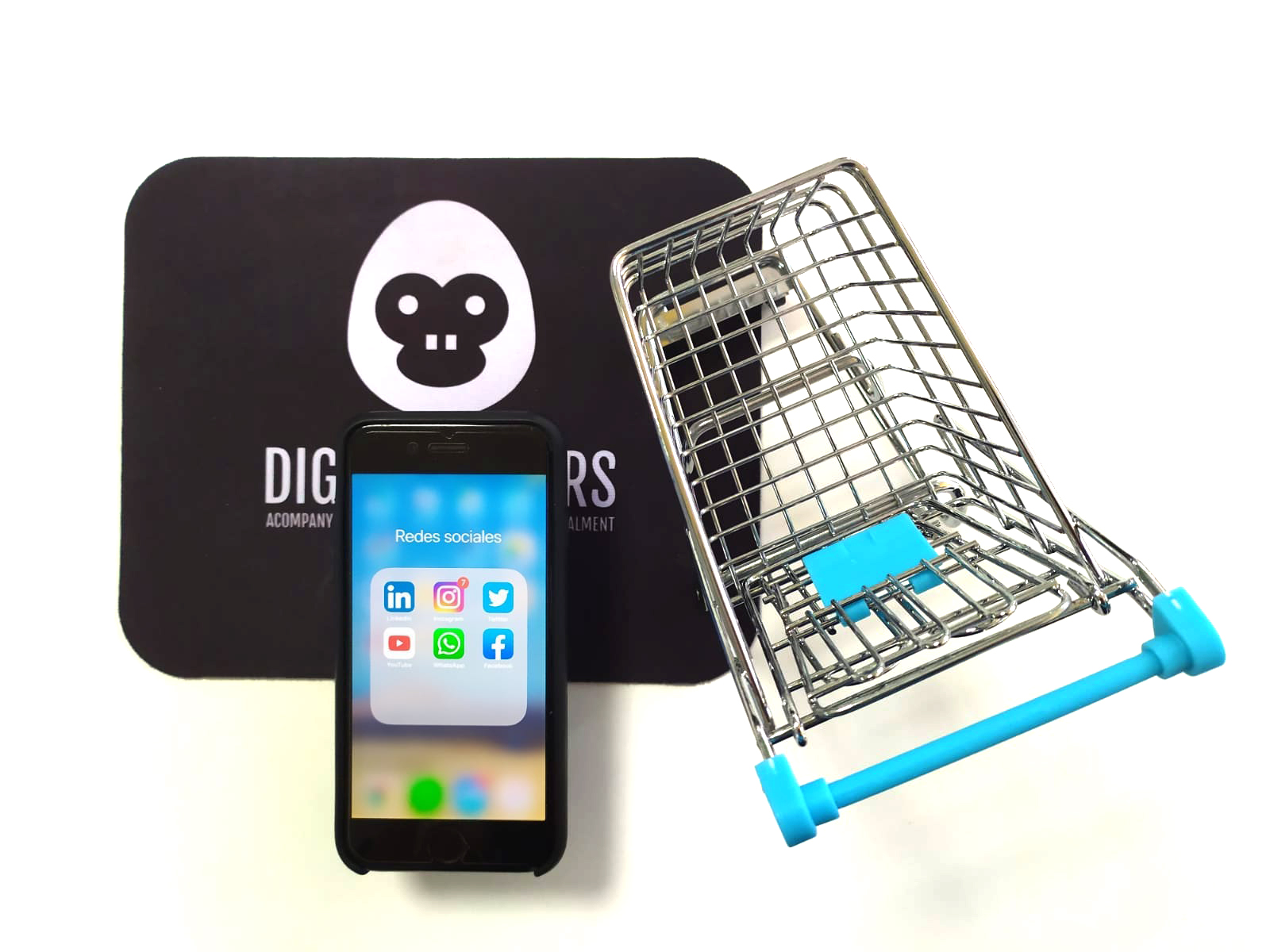Social networks have become a powerful tool and increasingly have more users with different profiles. They have changed the way in which we communicate with people and obtain information, as well as the way in which we can sell products and services. That is why in this article we want to talk to you about Social Selling, a way to use social networks as a sales tool.
The current client is a person who investigates before making a purchase: he enters the internet, forums, reads reviews and comments, and that means that, as a company, we are not in front of him to be able to advise the client. At the same time, new ways of finding potential customers and reaching more audiences have also been incorporated.
Before the rise of social networks, there were other ways to sell: door-to-door sales, telephone sales, mail chains, ... Today, this has become obsolete, even, according to a study, 90% of people Decision-makers in companies claim not to answer calls or emails, and potential customers only respond actively and frequently to short messages sent through social media.
What is Social Selling?
Social Selling consists of using social networks for commercial purposes to achieve sales of products or services, both in B2B and B2C businesses. In this way, we will create content aimed not only at finding, attracting and fostering relationships with clients from personally, but also to form a positive image of the company.
Although this concept may not be familiar to you, any user of social networks has probably done social selling without knowing this idea, although we should not interpret it as direct sales, advertising or spamming on social networks. Basically they are online social tools that will allow you to get to know your clients and thus better address their needs.
Social Selling has 4 main pillars to carry out a good Social Selling strategy:
- Objectives: describe and define what is the goal you are pursuing.
- arget audience or target: determine who your product or service is for.
- Quality content: create content that is useful and interesting, related to your strategy. You can even share content from other professionals.
- Achieve engagement: pursue achieving a stable, lasting and trustful relationship, focusing on the customer and not on selling.
Why use Social Selling?
Social Selling was created as an instrument to build a better and more connected relationship with your customers, aiming to get to know them and establish better experiences for them, as well as improved products and services, which will allow you to increase sales.
Although that is your greatest benefit, it does not mean that you do not have more of them. Some of the most notable benefits of doing Social Selling are:
-
Reduce the sales cycle
The tools and conversations on social networks allow you to better monitor and get to know your leads, reducing customer research time and generating added value for them.
-
Customer engagement and lead generation
56% of users feel more connected to those companies that are actively involved in social networks and react to their comments. Social Selling allows you to connect with customers even before making any direct contact with them and also allows personal communication to generate a powerful link between customer and brand. By offering quality content, you increase the chances of customer loyalty.
-
Increase online reputation and brand extension
An essential key of Social Selling is its power to enhance your branding, being able to reach a larger audience and increasing your area of influence.
-
Optimize online and inline sales
Although your company does not have an e-commerce page, a good social selling strategy will help you position your website and optimize your offline sales. And if you have e-commerce, it can be a tool that helps you improve sales.

How to do a good Social Selling?
Now that you know what it is and the virtues of Social Selling, you are surely wondering how to get to do Social Selling correctly. Here are some tips so you can do it:
-
Listen to your customers
Knowing your client and what they need will allow you to offer them a better service. Monitoring social networks will allow you to attract potential clients more effectively.
-
Build trust
When making a purchase, the client seeks to make this transaction secure: data protection, quality seals, legal regulations, ... It is an investment that will be worth your while and will generate confidence in the client.
-
Optimize your profile
Your profile is your cover letter, whether corporate or personal, and that is why it must be well done and optimized: a good photo, personalized urls.
-
Share quality content
Use your social networks to share quality content, thus making yourself more visible in search engines and generating greater engagement.
-
Coherence between profiles
If you have different accounts on social networks, you should try to maintain consistency between them.
-
Constant training
In the digital world, being out of date can take its toll. Try to keep an eye out for news and not fall behind.
-
Don't expect immediate results
Social Selling is not intended to be a tool for imminent results. It aims to achieve medium and long-term objectives, although the wait will be worth it.
-
Optimize resources
You can use the wide range of online tools that exist to manage your social networks. There are even tasks you can automate that will help you optimize your time.
Now that you know what Social Selling is and how you can benefit from its use, we hope that it has cleared up your possible doubts on this topic. If you still have any questions on the way, remember that we continue with our #askdigitalmakers initiative, where we will try to resolve them in subsequent articles.










